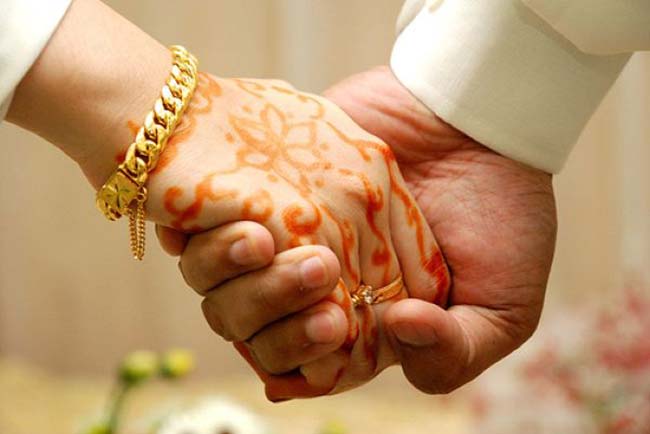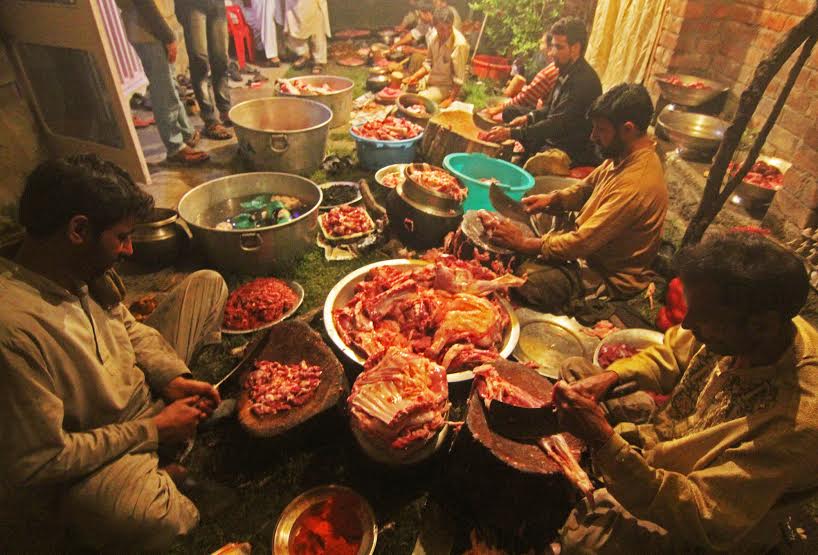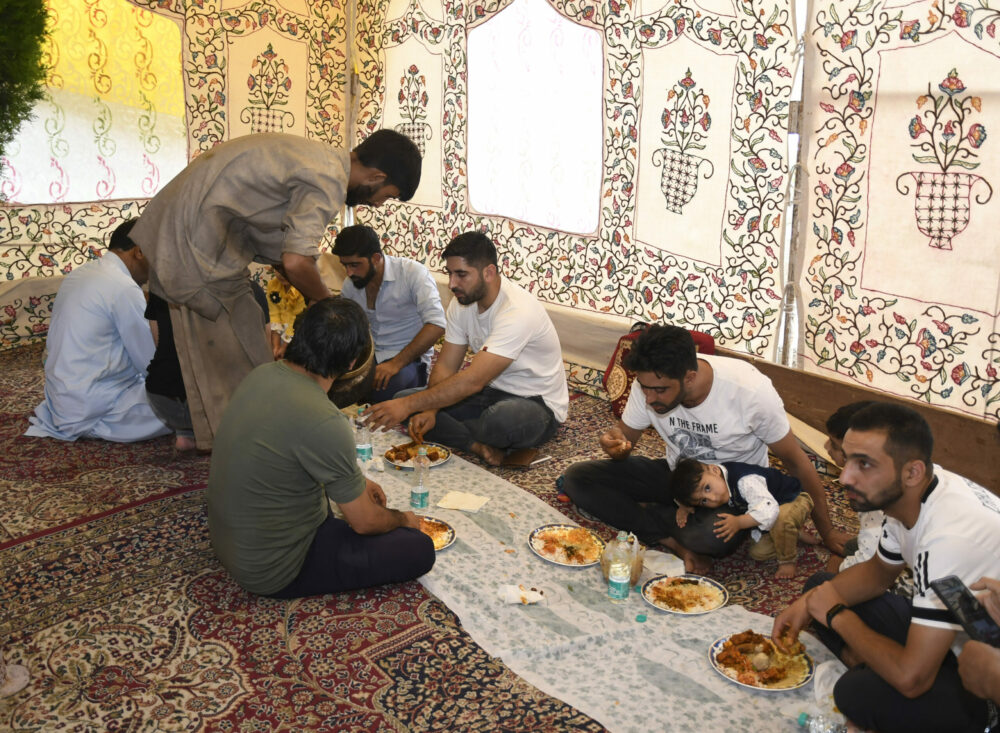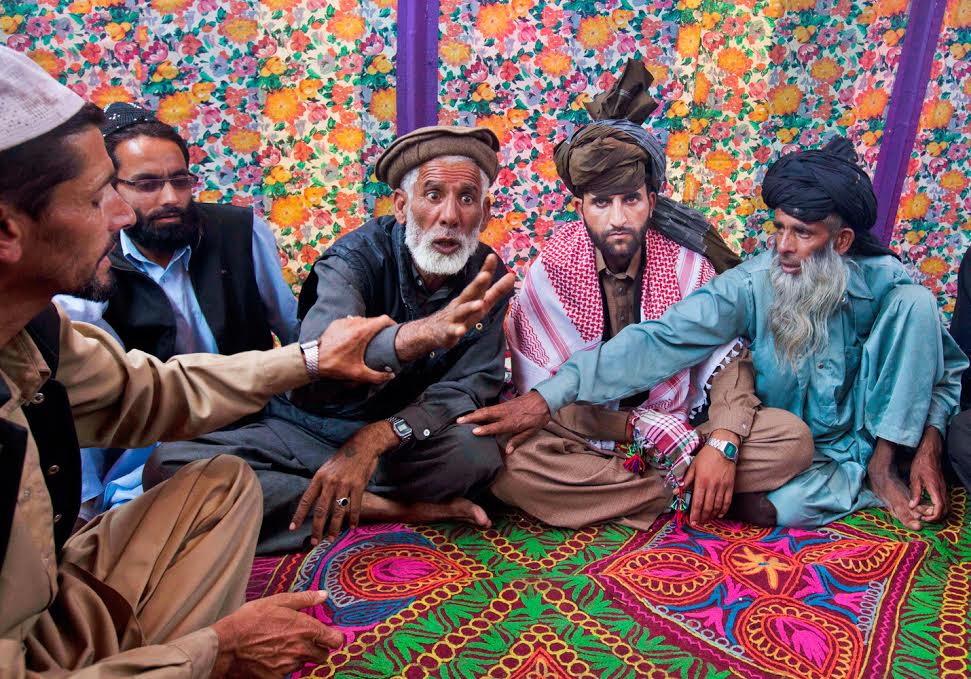Believed to be destined in heaven, marriage in Kashmir is gradually dragging to destruction. Consumed by the comparisons, this heavenly concept is taking a toll on socially segregated and economically uneven society, besides dooming many dreams, writes Tasavur Mushtaq
 September had just started. Wedding bells were on the go in businessman Ahmad’s family. An erstwhile resident of Srinagar’s Shehr-e-Khas, the family in the late 1990s had shifted to one of the city’s newly established posh colonies. First marriages among the children of siblings, and relatives from far and near were part of the celebrations, days ahead of the wedding. Many off-shore relatives flew in.
September had just started. Wedding bells were on the go in businessman Ahmad’s family. An erstwhile resident of Srinagar’s Shehr-e-Khas, the family in the late 1990s had shifted to one of the city’s newly established posh colonies. First marriages among the children of siblings, and relatives from far and near were part of the celebrations, days ahead of the wedding. Many off-shore relatives flew in.
One of Ahmad’s cousins, Ajaz was prominent in the wedding arrangements. Recently retired from government service at a senior level, he had free time after decades to participate in family functions freely. He took it upon himself to oversee the activities.
A friendly person and famous for his selfless approach, his persistent presence was a joy for his family and friends. Time was spent together. Finally, it took a couple of weeks to complete all the pre and post-wedding ceremonies. Everything went fine. Relatives and friends retreated to their homes. Routine resumed.
However, Ajaz, unlike his nature, was agitated. Lost in thoughts, his family, post-wedding ceremony noticed a change in him. As his wife started to enquire, he preferred to remain silent. On insistence, he revealed his remorse. Father of two grown-up daughters, he had his own concern. Oblivious to the change due to his preoccupied work schedule, the recent wedding has unveiled to him the huge transition traditional Kashmir wedding has witnessed, especially the costs. While sharing his woes with his wife, he was apprehensive of coming times when he would have to manage the marriage of his daughters.
The Twist
As the goalposts of life keep on changing, marriage has its own permanent peculiarity. With few exceptions, it is almost a universal fact to get married, sooner or later. Kashmir is in no isolation but could be different.

Not so long ago, managing Wazwan was seen as the biggest burden for modest families. Resource and labour-intensive, from booking dates to buying essentials, listing guests, managing space and eventually serving the feast – a tall order for anybody. The main thrust was on the feast, though with a limited number of dishes.
However, there is a twist. The times have changed. Wazwan has possibly taken the back seat and less messy affairs, the allied things have taken the toll.
The Transition
From a simple ceremony to a series of ceremonies, marriage in Kashmir has evolved disproportionately. If elders in families are listened to, there was a time when relatives used to contribute to managing affairs of marriage. It was a completely private affair, managed, managed at the most, within the clan, if not the family. Afterward, the ways and means changed. Looking back to the timeline of three decades, an addition to the formal functions was the meeting of two families on the lawn of some shrine, specific to the particular areas where the families belong, or the one common to both – an informal meeting, possibly to legitimise the meeting of boy and girl before arriving at a decision. The meetings mostly were done at the stage where affirmation was almost obvious; however, there were rejections as well. Initially done at a sacred place because of sanctity and to seek blessings for the new couple, later, platters became part of the process as well.
In between, parks too entered the scene. Many families preferred parks to perform this ritual of boy meeting girls in the presence of families. The process later was known as thaptrawin in local parlance. With constrained space to socialize, this cost-effective idea of meeting in parks picked up. So much so was the fame that a park near to secured graveyard of Sheikh Muhammad Abdullah in Hazratbal is known as Taqdeer park, the park of destiny. Various middlemen had their mobile offices in the park. Interestingly, if one match did not work for either of the families, they were quick to offer another option.
As time passed and a new generation took on the stage, the park performances started to look obsolete. Somewhat as they say “cheap”. Though it did not stop completely, it decreased drastically.
The open-space ceremonies shifted to closed doors. Hotels and restaurants became the new address for such functions. The thaptrawin function of the park turned into a “catchment” in the hotel. As the name suggests, it is a ceremony before the formal engagement. The sanctity of homes to host families shifted to hotels with grace.
Similarly, on the other fronts, things changed drastically. The space took a spin – from traditional Shamiyana with signature print to the well elaborate white house. The designs and decorations changed. Initially few flowers were seen as part of the decorations, now floral decorations are seen everywhere. From gate to galaxy, a variety of flowers are put across as per the theme chosen and the price paid. Further, the choice, cost, and consumption of sweets changed. Only the box carries the price tag of hundreds, leave aside the contents.

The Trend
Every bride and groom wished to be a trendsetter. From traditional attires to cultural concepts, the shift seems to have swept the floor. Earlier a family affair, now it is a street show. What transpires inside the four walls is out for live screening.
Since the day of “catchment” to the culmination of all the functions, the events are now planned meticulously. Otherwise decided and executed by their own family members, the proceedings from feast to fashion are being outsourced. With the advent of theme-based concepts along with destination-based weddings, the scenario has changed.
There are individual experts for every small exercise. The wedding planners took over the whole affair from scratch to the sky. From Mehandi artists to media managers, the lavishness has led to large-scale outlay. The latest entry is the Haldi function, which as of date Kashmir only knew its importance in cuisine and at times in curing ailments.
Flourished as an industry, social media fantasy has added fuel to the excitement. Seen as an extremely personal affair, the proceedings are put on media, and in no time it reaches everywhere. In a society believed to be shy, every minute detail is being shared. Otherwise managed internally, the make-up business is emerging enormously. Such is the rat race that now people prefer to book artists from other states of the country and bear expenses of travel, boarding, and lodging, besides the charges on a daily basis. The video man of erstwhile years with a big camera on his shoulder is a thing of the past, now smart and swift tools including drone cameras have been pressed in to capture the moments. No such activity costs in thousands and runs in lakhs only.

Later what has been filmed inside gets viewers across the globe. The interiors are accordingly set to suit the graphics, which also includes the choice of a cleric who solemnizes the Nikah. If the details are divulged, the choice is made on the popularity of the Molvi, as it is also a sign showing superiority. Culturally obnoxious, the stage to solemnize marriage is set after spending huge money and the sad part is the cleric reiterates the importance of making Nikah cheap. While he narrates the sayings about the Islamic way of marriage, the costs have already crossed the limits. Shut to the reality of his surroundings, he resorts to rhetoric.
A new tribe of media managers are dictating this trend. They record the wedding, convert it to a short film and put it on social media so that it drives more clients to them. Couples and families not interested in making it a media event are being charged more – literally a penalty for retaining the wedding as a private affair.
Singers have their role in making weddings extravagant. A few charge per hour, while others have a package to offer. With many people along, they have their own crew to cover the event.
When it comes to Wazwan, the limit has been breached long back. Not only the number of dishes but quantity as well. Traditionally a seven to eight-meal course, there are instances where even two dozen dishes were served to the guests. On top of that, the accessories added have their own cost, which now includes everything from washing to wearing.
The Tragedy
Kashmir possibly is the only place in the world where there is no class distinction displayed in weddings. Marriage seems to be the same for all. The only difference is that the rich shrug off their amassed wealth and the poor enter the debt trap.
If the conservative estimate is counted, around 50,000 girls in Kashmir have crossed the marriageable age because of financial constraints. Of these, the figures reveal, over 10,000 belong to Srinagar city alone.
In a society of comparison where everything is on the show, a crisis is bound to happen. Both girls and boys have a comparison to make and eventually impact their decision-making. In the fantasy, there is now the concept of a dream wedding. This eventually leads to dreams being dashed and encourages the version that good or bad, money makes merry.
Oldest Institution
Marriage is God’s idea. He knows exactly what our marriages need in order for them to thrive. A sacrosanct subject, human intervention beyond the level of holding the sanctity has its own costs. A cursory look at marital relationships without getting into the numbers reveals a grim picture. Marriages are crumbling. The percentage of divorce and discord is increasing.

There is no harm in celebrating the most important event of a lifetime. The ones who earn have a right to spend, but not to the level where it seems to harm social standards. It is God’s grace if somebody has earned it rightfully, but that does not give him the right to display it to demean others. Create chaos which leads to the dreams of other people being broken.
Likewise, traditions should not be trampled, but importing events to show “strength” in the societal setup is a sin. A groom’s family that is witness to lakhs being spent on a girl’s marriage is scared to have one at home. Resultantly, whenever there is a daughter in such families, they turn monsters to avoid their future costs. It results in discord. Bad blood is built up. An expenditure of lakhs turns into ashes only after a couple of years.
Whenever we have such occasions to celebrate, it should invariably come to our mind that while there are huge celebrations around, someone in the neighbourhood would be crying to have a meal for his family, medicine for his sick, or marriage for his daughter. A patient would be struggling with his sickness.
A society where the sanctity of humanity is trampled is bound to be hounded and never a happy one. In Muslim society, the only way to stay away from sin is to make marriages simpler.















